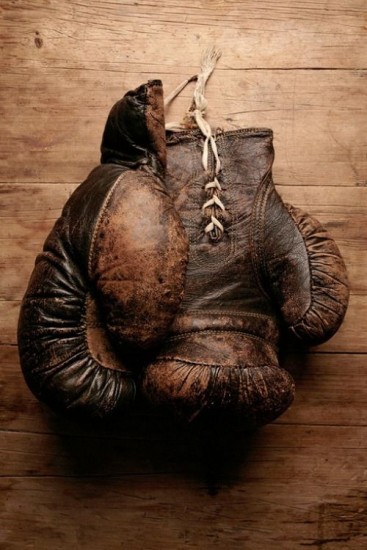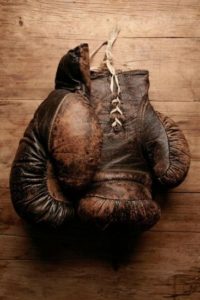Whitey Esneault
For nearly fifty years, legendary boxing trainer Whitey Esnault trained both neighborhood children and world champions in his French Quarter gym.

Courtesy of Flickr
Boxing. Unknown
For nearly fifty years, Ernest “Whitey” Esneault trained neighborhood kids at St. Mary’s Italian Gym on Chartres Street in the French Quarter. Chump or champ, it didn’t matter to Esneault. He trained them all, including two future world champions, with his unique style of boxing that emphasized speed and footwork.
Esneault was born on September 13, 1891, in New Orleans. After serving in World War I, he was discharged from the US Navy and began training youngsters to box. He set up shop in a tiny gymnasium behind St. Mary’s Church, next to the old Ursuline Convent on Chartres Street. Through those unassuming doors came young men looking for a way out of the crushing poverty most of them faced, looking for Mr. Whitey to teach them how to fight. Esneault toiled there in relative anonymity, molding, shaping, and preparing his athletes. Most would never have a shot at a title, but all of them would learn self-esteem and self-reliance.
Esneault preferred to remain in New Orleans, declining opportunities to travel with his boxers to more lucrative matches out of state. When his charges were ready to move on to the next level, Esneault would arrange for them to train in either California or Florida. One such arrangement was with Hall of Fame trainer Angelo Dundee of the Fifth Street Gym in Miami. Dundee would gain worldwide notoriety as Muhammad Ali’s corner man.
Among the fighters trained by Esneault were Bernard Docusen (the number-three ranked welterweight in the world in 1948), Keith Hamilton (US Amateur Flyweight Champion, 1948), Maxie Docusen (California State Lightweight Champion, 1949), Ralph Dupas (World Light Middleweight Champion, 1963), Willie Pastrano (World Light Heavyweight Champion, 1963–1964), Freddie Little (World Junior Middleweight Champion, 1969–1970), and Tony Licata (US Middleweight Champion, 1976).
Esneault’s lifelong struggle with diabetes eventually cost him his left leg in 1954, a loss that further restricted his ability to travel and led to ongoing battles with depression and alcoholism. Esneault died in New Orleans of a lung infection on January 20, 1968, at the age of seventy-six. As one sportswriter phrased it, “when Whitey Esneault died, the Golden Age of Boxing in New Orleans was laid to rest in St. Roch Number Two Cemetery.”
Esneault was inducted into the Greater New Orleans Sports Hall of Fame in 2006.
